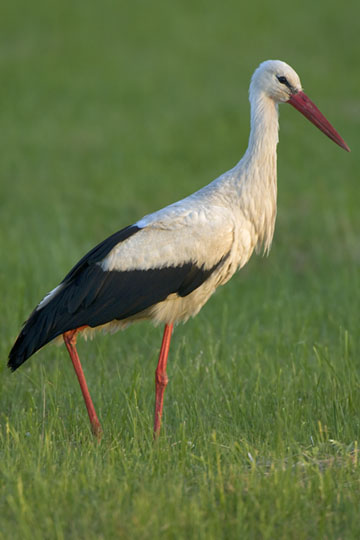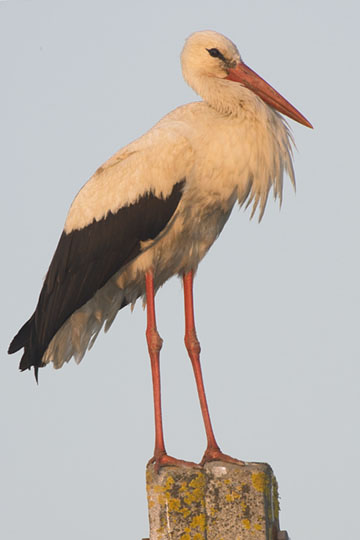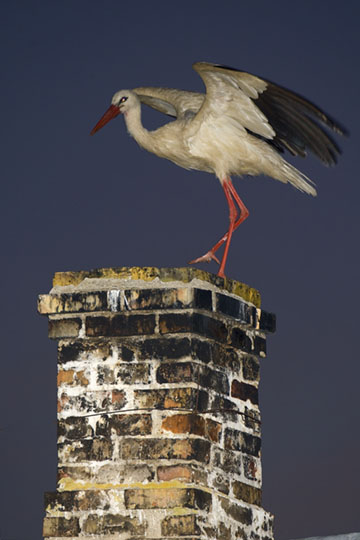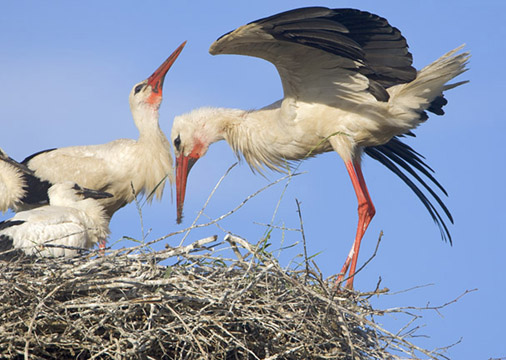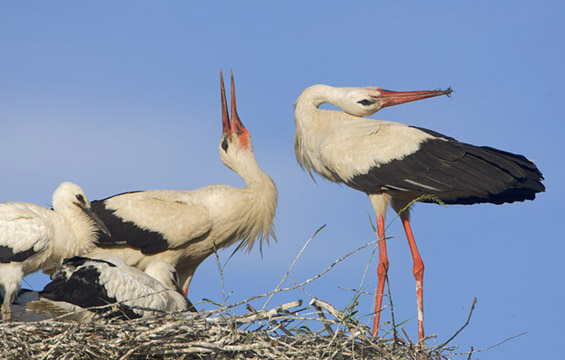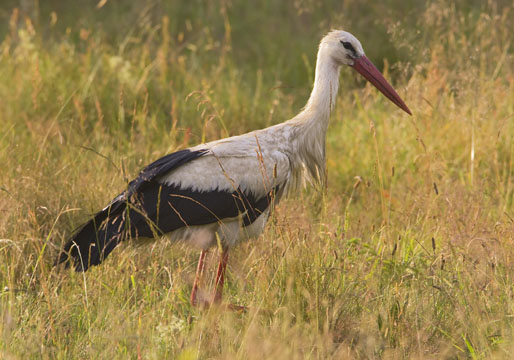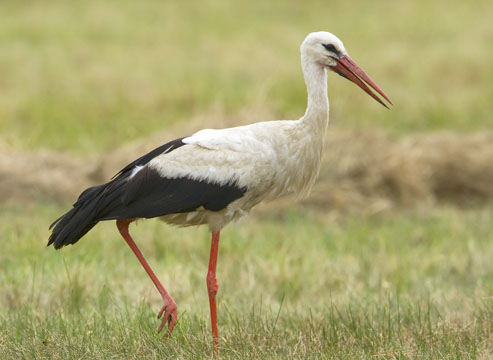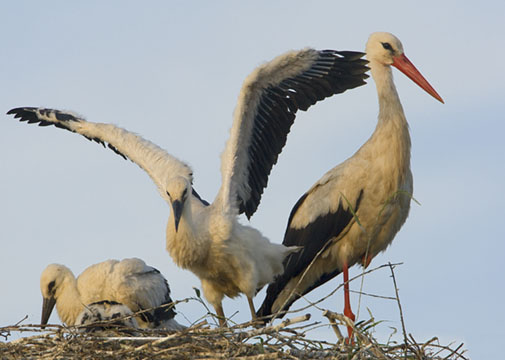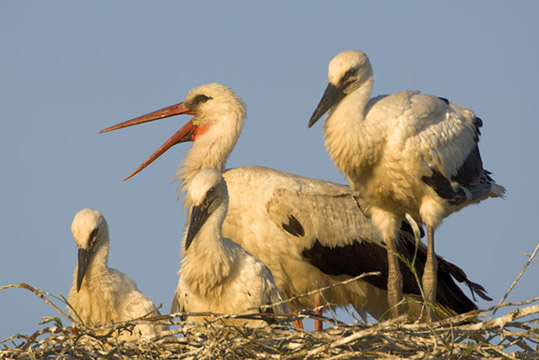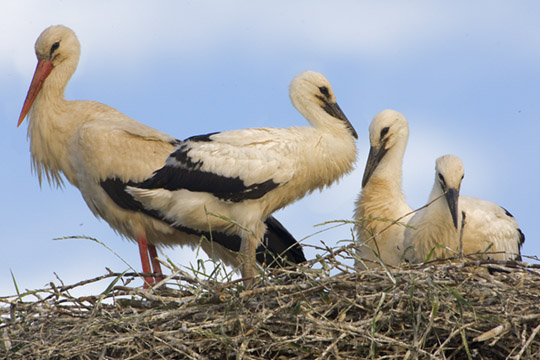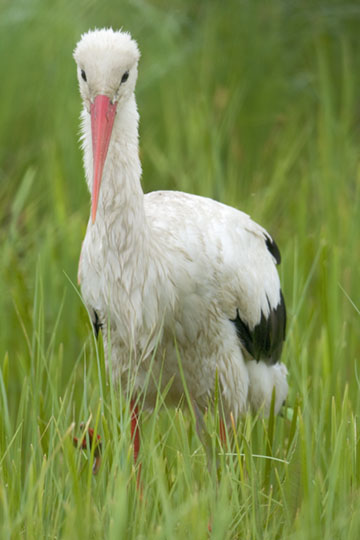 |
 |
|
|
|
|
White storks are one of the most well-loved and characteristic of birds, summering in Europe and Asia and migrating to wintering sites in Africa. As some of these birds are doing, storks feed in open meadows and fields, walking along at a dignified pace and snatching up any small animal they find: mainly insects, but also frogs, rodents, shrews, snakes, and even nestling birds. Pairs greet each other and threaten other storks with loud bill-clacking and head-tossing displays (below right). In Europe they frequently follow tractors and cattle around fields, and typically nest (and roost) on man-made structures: chimneys, roof peaks, and nesting towers built specifically for them. Storks are declining in some parts of western Europe, probably because of changing agricultural practices, but in eastern Europe, particularly eastern Poland, they are thriving. 2008 was a banner year for storks: most nests had 3 or 4 large young and some had 5. I photographed these birds in several locations in the spring and early summer of 2008: in Bialowieza on the Byelorussian border, at a famous 'stork village' near the small town of Tycocin (26 active nests were easily visible from the top of a small tower), and in Biebrza National Park. Images of storks in flight are on this page. |
|
|
|
